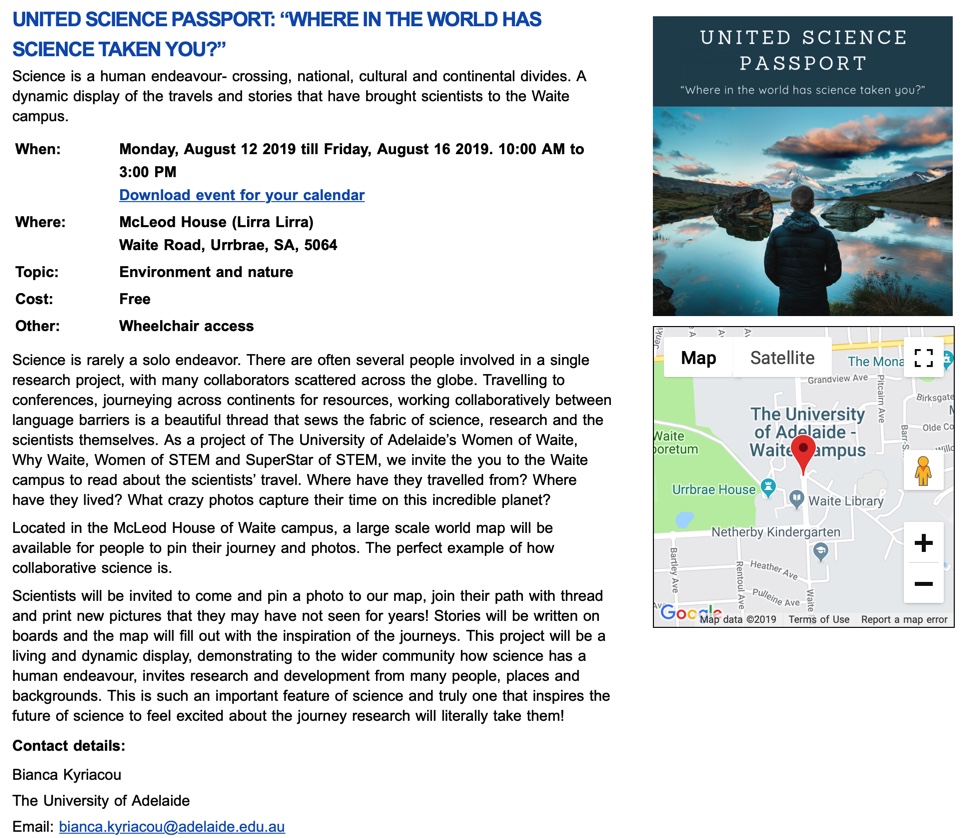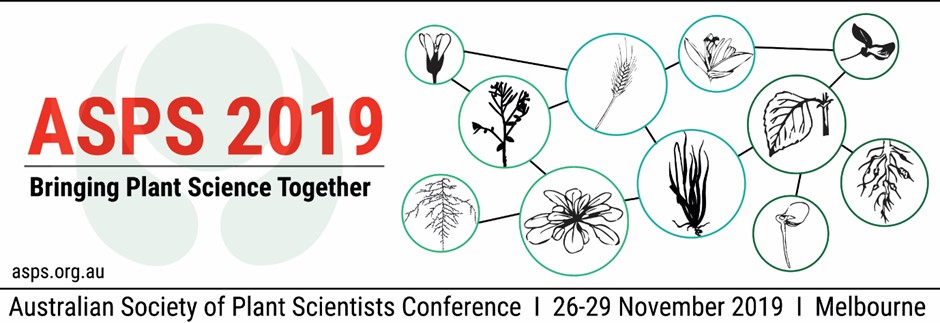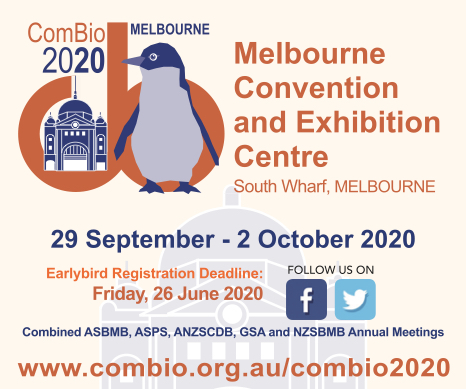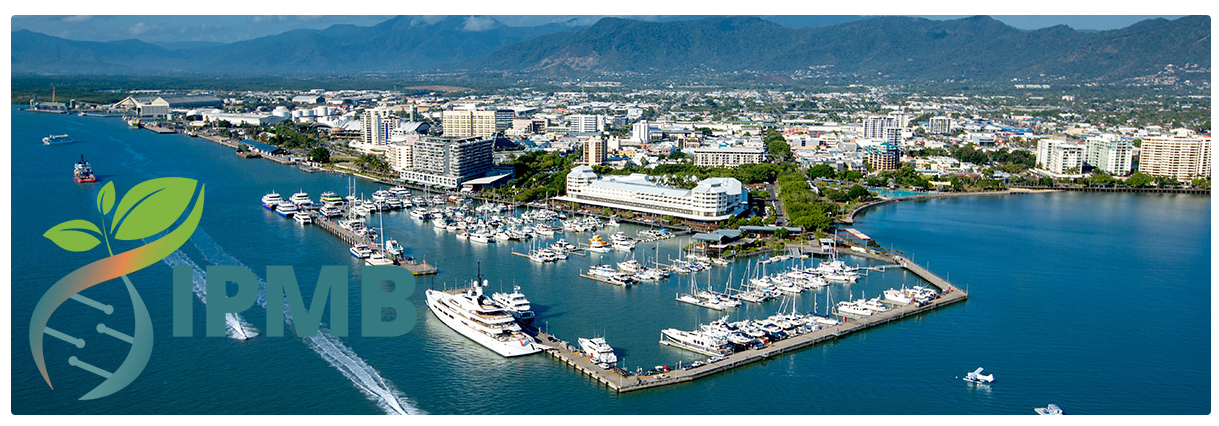It is National Science Week this week. 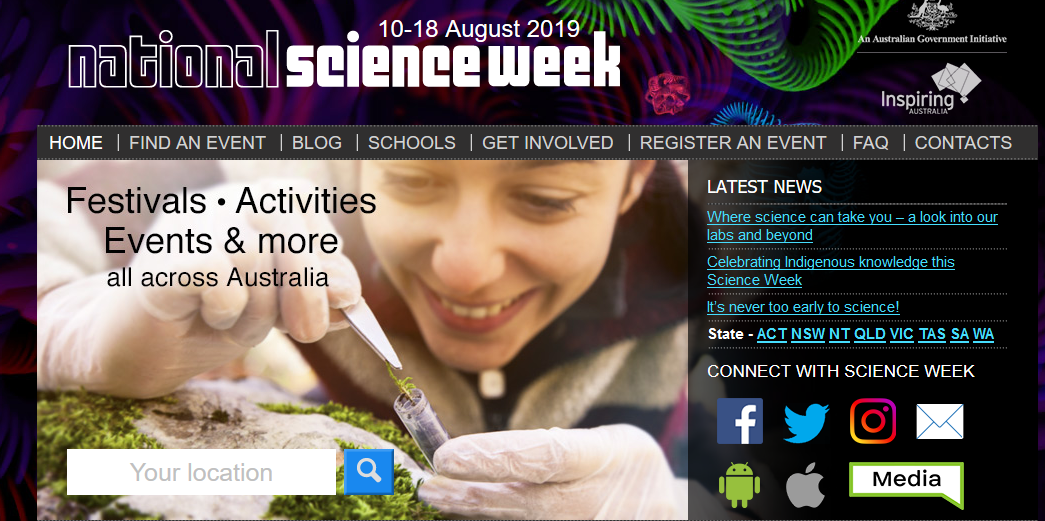 Taking a look at the events got me thinking about how amazing our peer networks and our travels have been. In particular, I draw your attention to an event occurring at Adelaide University
Taking a look at the events got me thinking about how amazing our peer networks and our travels have been. In particular, I draw your attention to an event occurring at Adelaide University
Even though you all won’t be able to make it to Adelaide this week, the theme of global peer networks is evident in this report by John Evans reflecting on this years Translational Photosynthesis Conference.
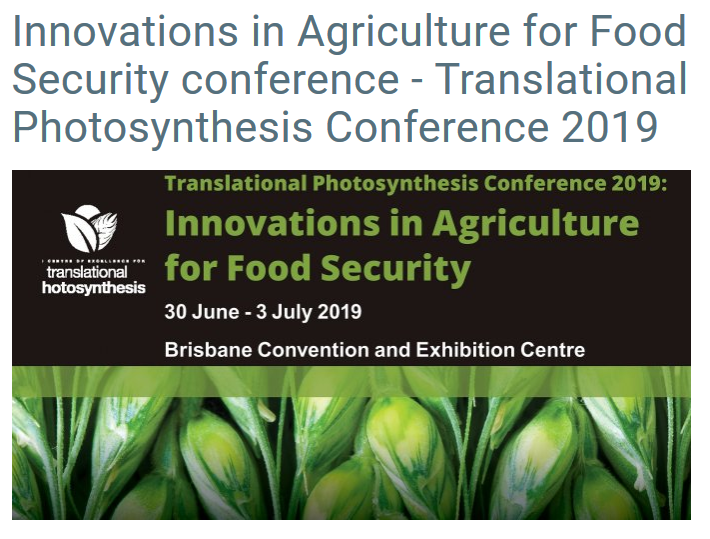
Report on the conference Innovations in Agriculture for Food Security
by John Evans
ASPS was one of the sponsors of this conference that was held at the Brisbane Convention and Exhibition Centre (30 June – 3 July). Over 100 people attended, including Professor Susanne Schmidt and Sana Khan from UQ who represented ASPS. To promote ASPS, a beautiful banner was designed and displayed.
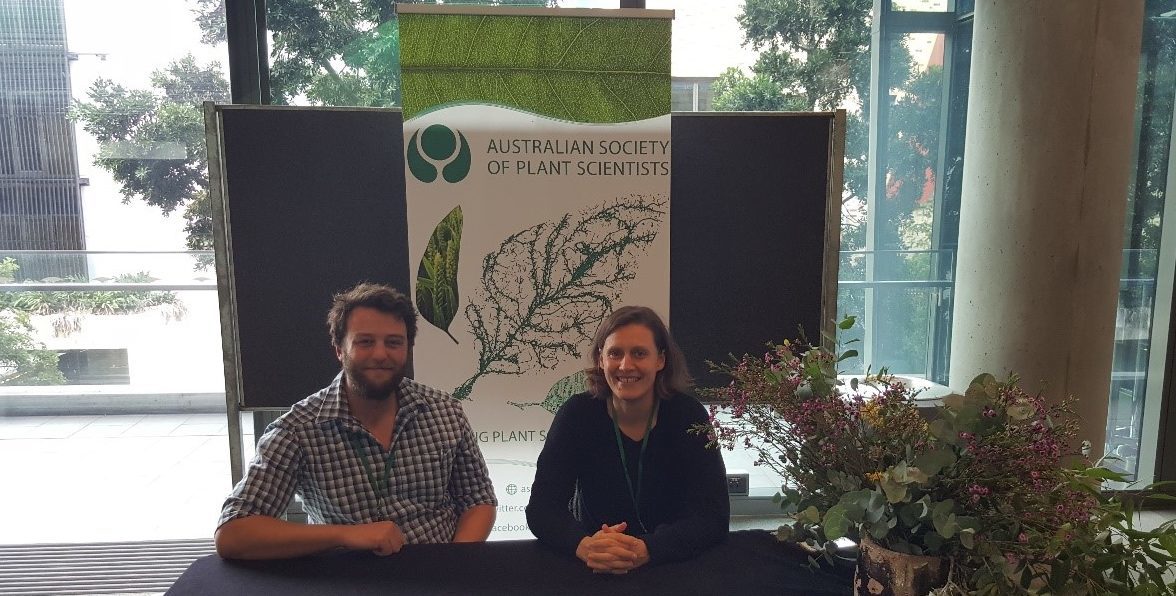
Tam Salter and Caitlin Byrt sat in front of the ASPS banner they designed.
Attendees came from the UK, Germany, Canada, USA, China, the Philippines, Czech Republic, Australia and NZ. One aim of the meeting was to raise awareness of the broader context within which researchers work. Establishing contacts and a network of people can be of great benefit to science and careers, so the meeting began on the Sunday evening with a forum for the next generation, organised by Alex Wu. Plenty of time was allocated to the morning and afternoon poster sessions. Preceding these sessions, poster presenters introduced themselves in flash talks to encourage people to come and discuss their work. It was clear from the animated groups, that these opportunities were well used. The ECR (usually early career researcher) acronym was redefined by Barry Osmond to include end of career, but his enthusiasm for espousing the possibilities of LIFT (laser induced fluorescence transient) method, clearly showed he is embarking on yet another research phase. By contrast, Graham Farquhar regaled us over the conference dinner with how many times during his early career his next step was only made possible by personal recommendations rather than from an excellent academic record. Metrics and regulation are the current challenges that need to be mastered by us all if we want to achieve career and food security.

Graham Farquhar recounting his early career as the ferris wheel spun behind him during the conference dinner (Photo by Natalia Bateman)
Raj Bhula, from OGTR (Office of the Gene Technology Regulator; Australian Government), explained the current state of Australian regulation for genetic modification of organisms. It is important that ASPS members take the opportunity to submit responses to enquiries over future changes to regulation so that the voice of scientific practitioners can be heard and counter activist groups that are opposed to GMOs. This is particularly pertinent for the rapidly emerging capability offered by CRISPR cas9.
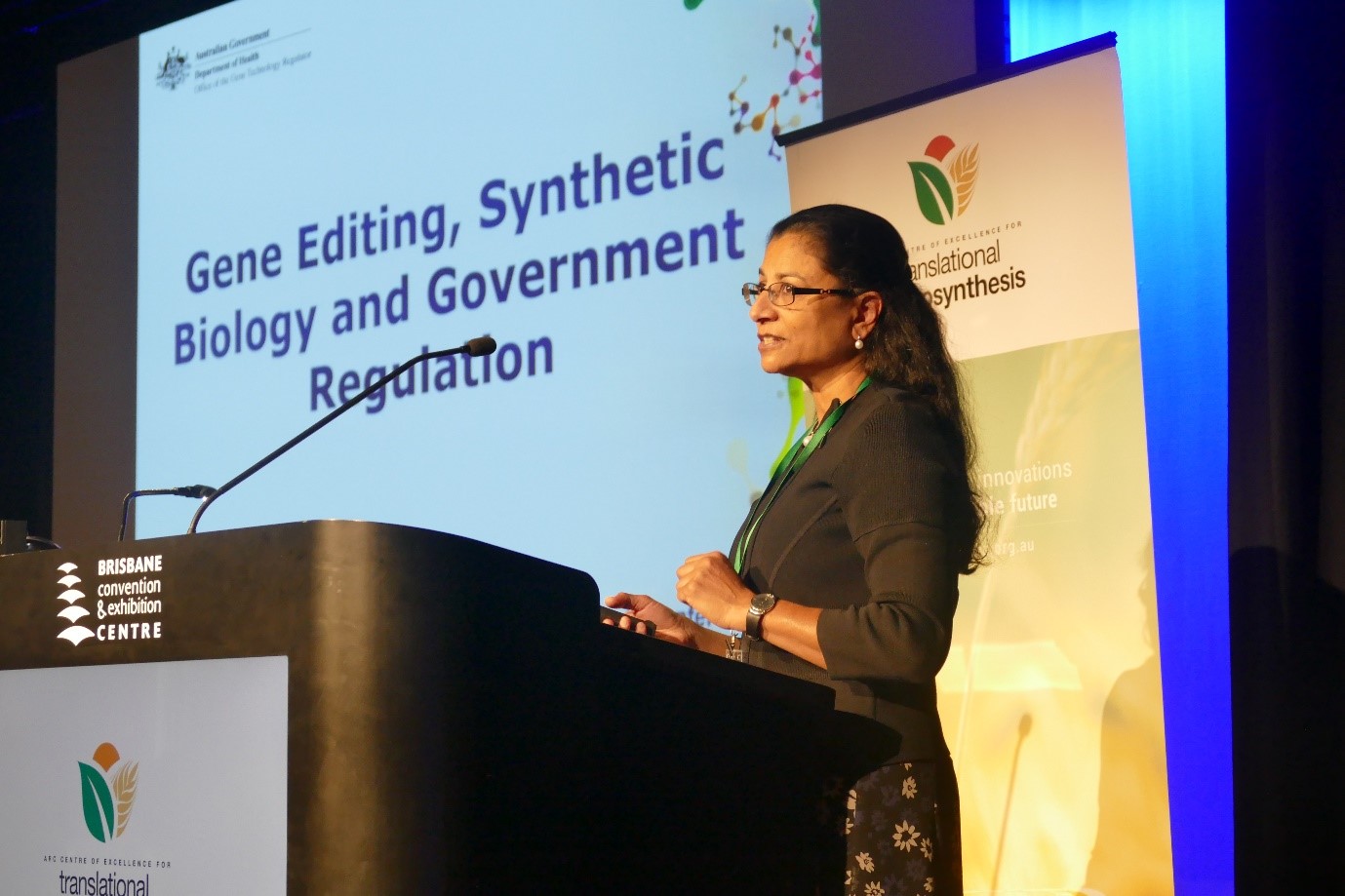
Dr Raj Bhula, from Australia’s Office of Gene technology regulator (OGTR), delivering her keynote address (Photo by Natalia Bateman)
One final highlight was the keynote talk from Mark Stitt who reminded us of the problems we cause plants when growing them in square wave controlled environments. Turning the light on and off abruptly rather than gentle light transitions through natural dawn and dusk plays havoc with gene expression and presumably disrupts plant physiology.
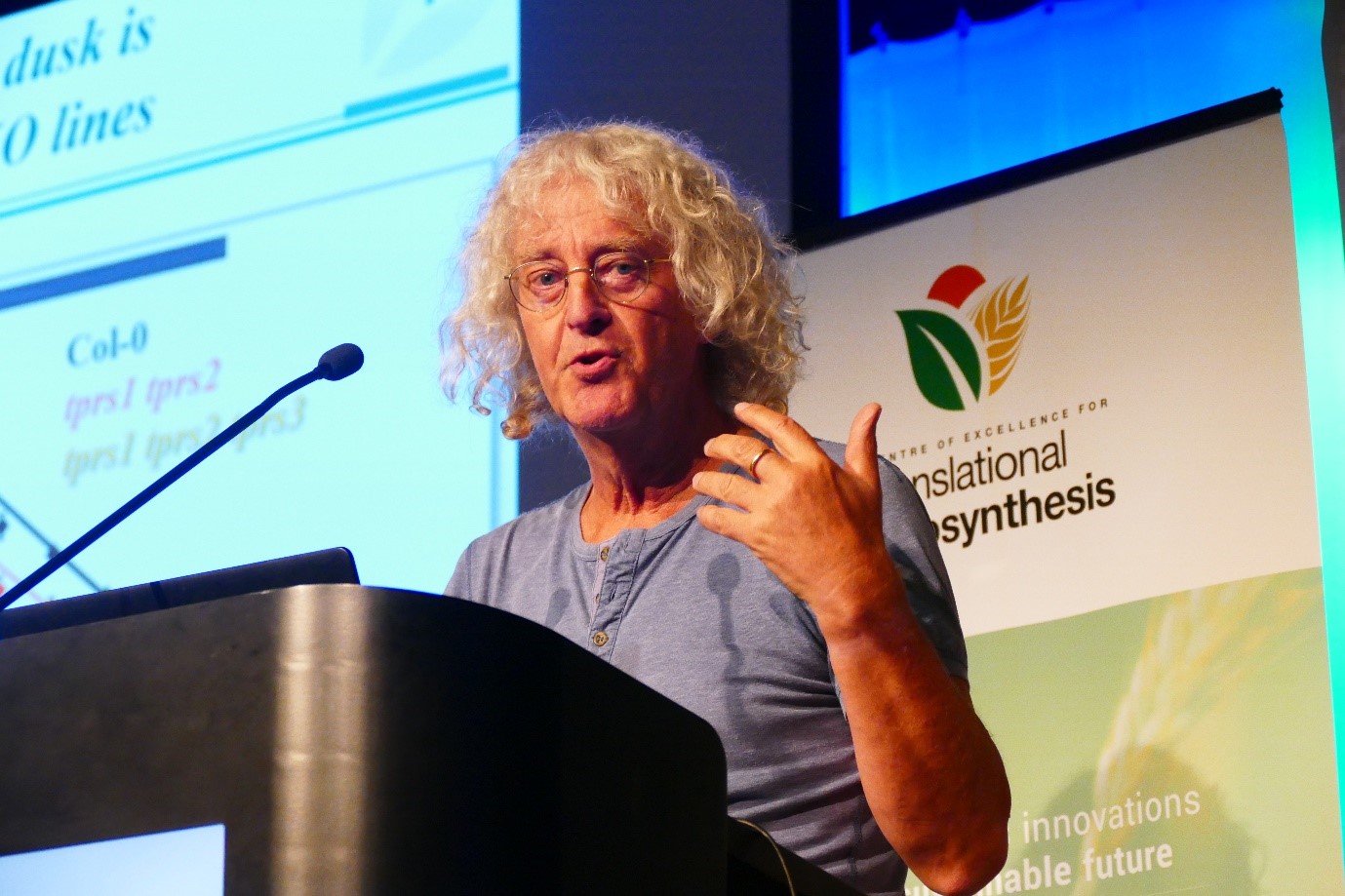
Mark Stitt delivering his keynote address (Photo by Natalia Bateman)
Lastly, here is a report from one of our RN Robertson Travel Fellowship awardees. Carolyn Vlasveld from Monash University visited the University of Tasmania in May-Jun 2019.
RN Robertson Travelling Fellowship Report
by Carolyn Vlasveld
My PhD involves understanding differences between the leaves of juvenile and adult eucalypts. Working on this has led me towards studying juvenile-adult differences from the context of leaf hydraulic function. Consequently, the more discussion I had with my supervisors, the more it became apparent that I should investigate differences in leaf physiological traits. But my knowledge at the time entailed more about the ecology of morphological traits – I had little understanding of leaf physiology and measuring physiological traits.
This led me to visit Tim Brodribb’s laboratory at the University of Tasmania (UTAS) with the help of the RN Robertson Travelling Fellowship. A major focus of their work is the evolution of leaf physiological traits fundamental to hydraulic function. They had recently found differences in xylem vulnerability between the juvenile and adult leaves of Eucalyptus globulus (Lucani et al. 2019), using their novel optical vulnerability (OV) method. They suggested that I learn this method because it is often simpler than previous methods for measuring xylem vulnerability.
My visit focused on learning the OV method, among other techniques important to my thesis, such as preparing stained leaf samples for viewing anatomical structures. I measured the leaf xylem vulnerability of Eucalyptus globulus trees growing at the UTAS campus. The OV method involves measuring water potential and cumulative embolisms over time by using an optical camera. The camera detects embolism events by taking a time-lapse series of images of a dehydrating leaf. Light is transmitted through the leaf blade for each photograph. After xylem conduits embolise, they transmit less light through the leaf. Consequently, the occurrence of an embolism is detected by the light difference between two sequential images in the time-lapse. These embolism occurrences are later isolated and translated from the images to quantify cumulative embolisms as leaf water potential decreases over time.
A 3D-printed clamp containing the camera is secured over a dehydrating leaf, which encloses a section of the blade to prevent the entry of outside light. The camera connects to a raspberry pi computer, which programs the process of taking sequential photographs. Meanwhile I also learnt to use a Scholander pressure bomb and psychrometer to measure water potential.
This method will be used in my thesis to compare xylem vulnerability in other species occurring in different environments, and I wish to stay in contact with those at UTAS through this process.
I loved staying in Hobart and winter was a perfect time to visit – I caught the Pint of Science at Shambles Brewery, the view of snowy Mount Wellington from the city, and the UTAS School of Biological Sciences’ famous “Crib Night” where everyone dresses up to have a cribbage tournament.
Thank you very much to the Australian Society of Plant Scientists, the RN Robertson Fund, and the University of Western Australia for helping me take this trip. Thank you also to Tim Brodribb and others in his laboratory for making me feel welcome and sharing their skills and knowledge. This visit enriched my experience as a PhD student in addition to learning new techniques required for my thesis and increasing my understanding of leaf hydraulic function.
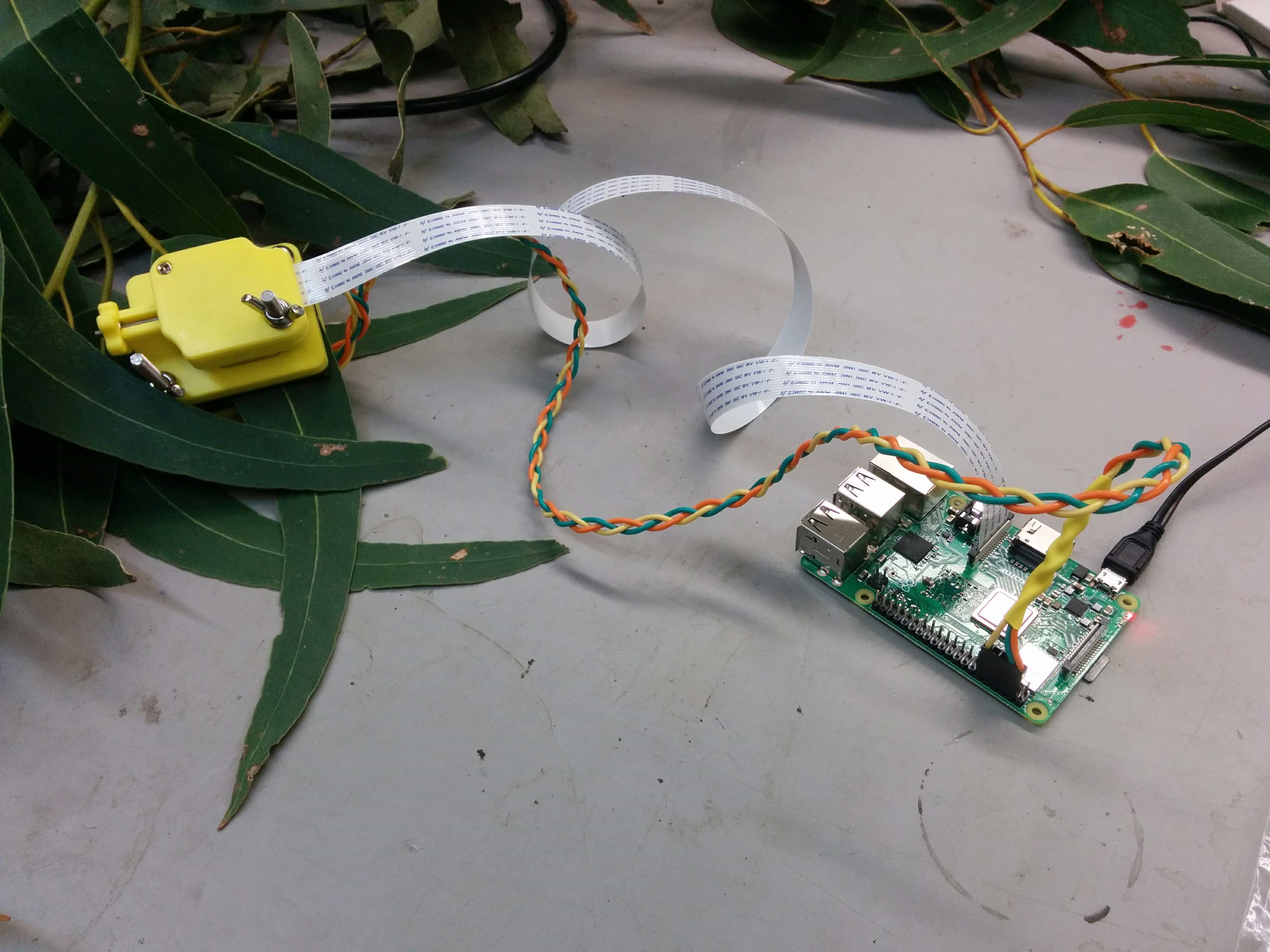
References
Lucani CJ Brodribb TJ, Jordan GJ & Mitchell PJ (2019) Juvenile and adult leaves of heteroblastic Eucalyptus globulus vary in xylem vulnerability. Trees 1-12.
I hope you will be able to finish off the week attending a science event near you or catching up with your peers and their travels at an upcoming meeting, many are listed on our website (upcoming events/add an event page under the events tab) and you can add events…….. Next month will be reports from Science Meets Parliament.
| ASPS 2019 to be held 26-29th November 2019 is an event not to be missed! It will bring together plant scientists from across Australia and will be held at AgriBio, La Trobe University, Melbourne. |
| In 2020, |
| In 2021,
the 13th International Congress on Plant Molecular Biology will be in Cairns, Australia |

